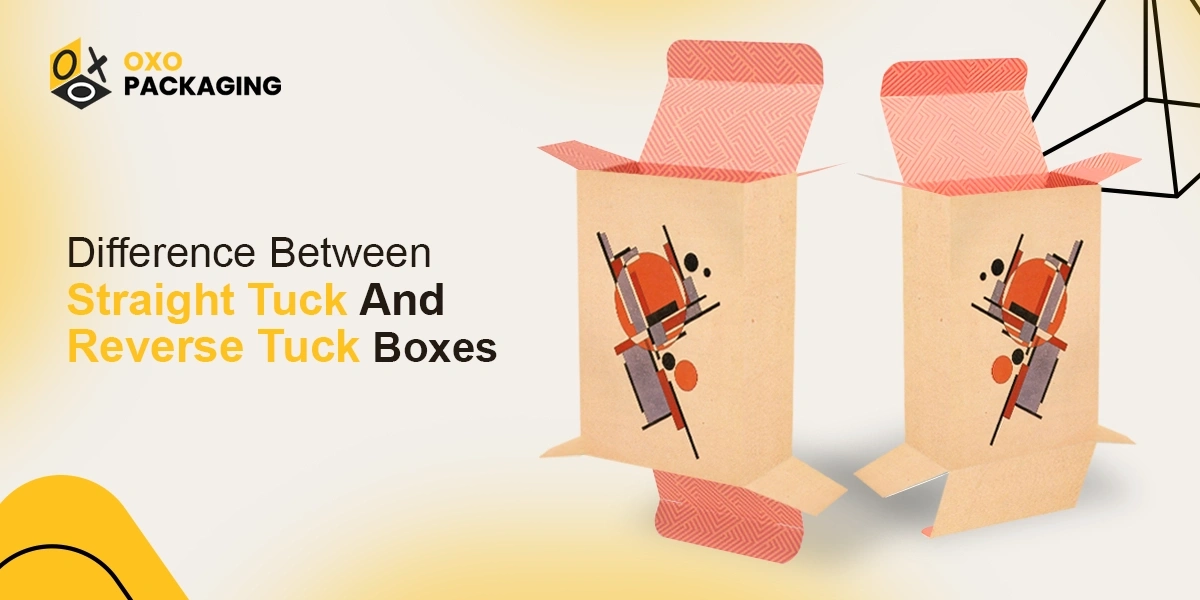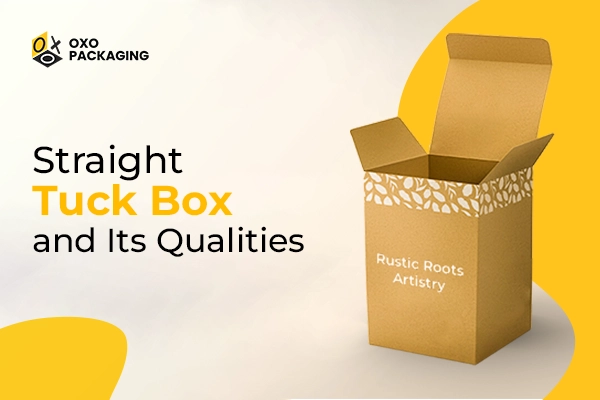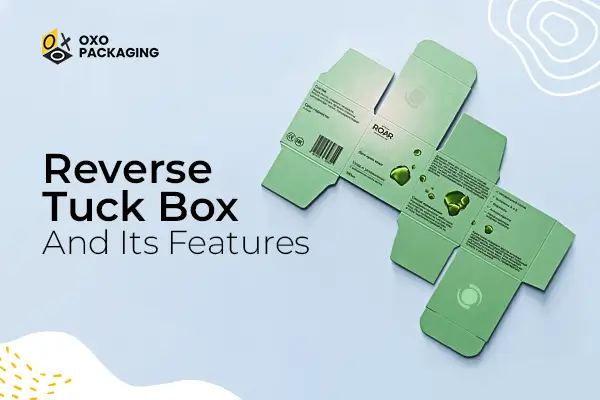Your guide to explore the difference between straight tuck and reverse tuck boxes

Introduction
After manufacturing a winning product, it’s time to launch your brand. You won't be able to secure a golden spot in sight of customers without good packaging. Tuck boxes are your customizable partners as you look for the best packaging.
But while moving forward, two of the most similar options are the straight and reverse tuck boxes. Both offer protection and display capabilities. Yet, what exactly sets them apart? How do you decide which type of tuck box is right for your product?
Let’s go through the key differences between straight and reverse tuck boxes. Understand the benefits and limitations of each style to make a sound choice for your exceptional packaging needs.
See Also: 5 Amazing Benefits of Tuck Top Packaging You Should Know
Straight Tuck Box and Its Qualities

A straight tuck box is a standard packaging style used across industries. It consists of five panels: a front, a back, two sides, and two openings. Both openings have flaps attached to the sides that fold inward. A larger flap extends from the front panel and folds over the side flaps, tucking into the back panel. This creates a crisp, clean edge along the front of the box.
Some Benefits of Using Straight Tuck Boxes Include:
- Visually appealing for retail shelves or displays
- Easy to assemble
- Stack efficiently for storage and transport
- Lightweight yet sturdy construction
- Ideal for light gift items, retail products, or promotional giveaways
- Allow custom branding capabilities
Potential Downsides of Straight Tuck Boxes:
- Require more material to produce
- It is not as suitable for heavier items without tape or adhesive
- Only able to access content through the openings
Reverse Tuck Box And Its Features

A reverse tuck box follows the same basic construction as a straight tuck style. But, the front and back openings function in opposite directions. So, the top flap folds from front to back, while the bottom flap goes from back to front. This causes both flaps to open toward the outer packaging front.
Some Advantages of Reverse Tuck Boxes Include:
- Use less material and cost a bit less
- Contents visible from both flap directions
- Compact storage; lays flat
- Appropriate for lighter items
- Ideal for e-commerce or wholesale shipping
Some Disadvantages Consist of:
- It is not as visually appealing; obscured branding
- Accessibility only through the openings
- Requires adhesive for heavy items
Key Differences Between the Two Styles
Now that you understand the basics of straight and reverse tuck boxes and how Tuck boxes can enhance your product Sales let’s look at three significant differences when selecting your packaging.
-
Opening and Closing Functionality
The main distinction is in the direction in which the flaps open and close. For straight tuck boxes, the flaps fold inward toward the box backing. Reverse tuck boxes have flaps that open outward toward the box front. This variance impacts accessibility to contents.
Straight tuck allows access through both end openings. But reverse tuck essentially “blocks” the box front with the flaps. So you can only insert or remove items through the box ends. Keep this in mind, depending on if you need side and front accessibility.
-
Appearance and Brand Messaging
Straight tuck boxes deliver an elegant, polished aesthetic for merchandise. This allows optimal visibility for branding elements on the box front. Reverse tuck flaps conceal the box face, obstructing branding exposure.
So if emphasizing visual appeal and promotional messaging, straight tuck best spotlights custom graphics or logos. Reverse tuck limits externally-facing branding capability since the outward-opening flaps cover box real estate.
-
Cost and Structural Integrity
Producing reverse tuck boxes utilizes substantially less material. This directly correlates to decreased production costs over straight tuck.
However, reverse tuck flaps aren’t as structurally sound for heavier content. Their openings also lack stability overall, requiring adhesive or tape for items over 1-2 pounds.
Straight tuck boxes lend themselves better to displaying merchandise without additional reinforcements. Consider weight thresholds and structural demands when selecting between the two tuck styles.
How to Decide Between Straight and Reverse Tuck Boxes
We’ve explored the distinct advantages of straight and reverse tuck boxes concerning aesthetics, cost savings, durability, and branding display. But with all these factors, how do you find the best style for your products?
See Also: Types of Boxes For Small Businesses In 2024
Here is a helpful framework when deciding between straight tuck vs reverse tuck packaging:
Packaging Purpose and Priorities
First, define your packaging goals and constraints. Consider elements like:
- Target budget per box
- Item weight and support required
- Branding visibility preference
- Ideal box construction and material
- Expected shipping handling and drops
This analysis will reveal priority areas to guide your optimal tuck style selection.
End Use Case and Audience
Check the complete product journey from packaging to amazing unboxing experiences across end users. For example, reverse tuck boxes suit e-commerce or wholesale channels focused on operational efficiencies over flashy unboxing moments.
However, straight tuck better caters to retail settings needing shelving display stability or gift packaging requiring more robust structural support. Analyzing distribution channels, customer types, and usage helps match the tuck style advantages to your packaging application.
Wrap Up: Match Tuck Style Benefits to Your Packaging Priorities
Straight and reverse tuck boxes share similarities but deliver advantages based on different priorities. Straight Tuck excels in display, quality construction, and branding exposure but costs more. Reverse tuck is effective on materials and meets basic containment needs but lacks aesthetic polish.
Success comes down to matching tuck box strengths to your most pressing packaging requirements. Outline your budget, handling expectations, appearance preferences, and beyond to reveal the ideal fit. You can select between these standard packaging options with proper consideration backed by this helpful overview. It will help you ship out products protected and presented in their best light. If you have any questions regarding these boxes or want to place your order, you can reach out today sales@oxopackaging.com to get a custom quote!
Frequently Asked Questions
What are tuck boxes?
Tuck boxes are folding paperboard boxes used for packaging and displaying products.
What is a reverse tuck box?
A reverse tuck box is one with flaps that open outwards towards the front of the box.
How do you make a straight tuck box design?
To make a straight tuck box design, attach flaps to the box's back panel that tuck into the front panel to create clean edges.




